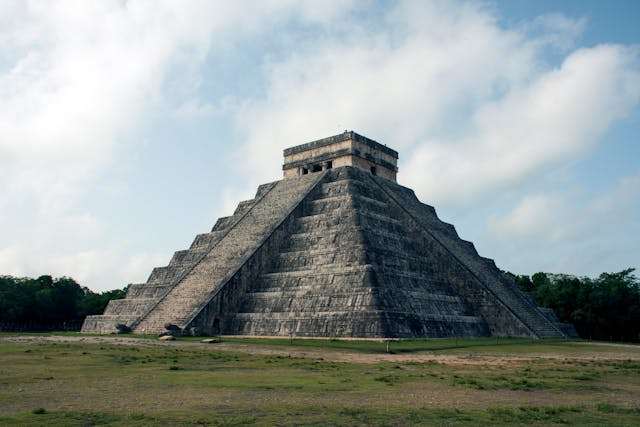
What are pyramids for? Some pyramids are tombs, some are just monuments, and many are for religious or ceremonial purposes. There are a lot of pyramids, such as the ones in Mexico, that people don’t really know the purpose of.
People tend to think that the Great Pyramids in Egypt are the only pyramids that were built in the ancient world, but this is not true. There are over 5,000 pyramids around the world and only 118 of those are in Egypt. The rest are spread across Asia, Africa, and South America. There are a few pyramids in Europe and North America, but not many. Sudan has the most pyramids, with 220 discovered so far. New pyramids are discovered all the time.
Why did ancient people build pyramids? They had a lot of different purposes, but the reason why they built pyramids over other monuments is that they are structurally simple to build. The construction is obviously not easy and they required huge amounts of manpower, but they are simple structures. A building needs foundations and supports, but a pyramid only needs to have a large layer at the bottom and then increasingly smaller layers as construction goes on. They support themselves. This is the reason that mountains are basic pyramid shapes and ancient people may have looked at these mountains and tried to make something that is similarly majestic. They were also able to make pyramids because they had worked out how to quarry stone. You could not make a pyramid out of wood because the size of the blocks would be limited by the size of the tree and because wood is easily compressed. Stone blocks can be mined to be any size. The only limitation is whether they can be moved or not. And stone has a very high compressive force, which means that stones at the bottom can easily support the weight of all the stones above them without being crushed. Early people started off by building very small mounds. Then they began to combine the mounds, building them on terraces, one above the other. Then they started to build pyramids.
So, what are pyramids for? A lot of them were built as tombs. All of the pyramids that have been found in Africa appear to be tombs. The Egyptian pyramids, especially the large ones, are probably the most famous tombs, but there are a lot of others as well, and the evidence that they were tombs is vast. The pyramids were built with burial chambers inside them. They were obviously not storerooms for anything else because they were too small. There were also instructions left in the pyramids to help the soul of the pharaoh buried in there to cross over to the afterlife. Pieces of mummies and a lot of other burial artefacts have been found in the pyramids, but most of them were looted, which means we can’t see how they would have looked. In the early days, pharaohs had burial mounds that grew larger over the years. It became a status symbol and a way to show off power. Only the richest and most powerful pharaohs could afford to build such massive pyramids. They also served as a symbol of the divinity of each pharaoh because they were living gods. Unfortunately, Tutankhamun, the one complete tomb that has been found, wasn’t buried in a pyramid.
However, tombs are not the only uses for pyramids. There are many tombs that were built in South America as well. They were built by the Mayans, the Aztecs, the Incas, and many other civilizations. Some of these pyramids are also tombs, but many are more like temples and probably served a religious purpose. The pyramids in South America were built much later than the ones in Africa. The earliest were built in about 1000 BC and they were built with earth as well as stone. They often had an earth core and the outside was faced with stone. They were often built in steps with a staircase running up to the top. The pyramids in Egypt haven’t really changed since they were built, apart from having their outer casing stolen. The pyramids in South America were often rebuilt as each new ruler tried to outdo the previous ruler.
South American pyramids were usually where a deity was located and they were the religious center of a town. Many of the early South American city states grew up around a pyramid and they could use it for their religious ceremonies as well as somewhere to stay if the city was in danger. There is some talk of human sacrifice that would have taken place on these pyramids as well. Many of these pyramids are still standing and are possible to visit. And this is what I learned today.
Photo by Rosario Martínez Cué: https://www.pexels.com/photo/el-castillo-during-daytime-10427227/
Sources
https://www.history.com/topics/ancient-americas/pyramids-in-latin-america
https://en.wikipedia.org/wiki/Mesoamerican_pyramids
https://en.wikipedia.org/wiki/Egyptian_pyramids
https://www.nationalgeographic.com/history/article/giza-pyramids
